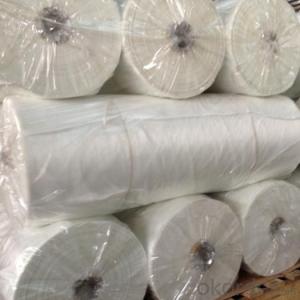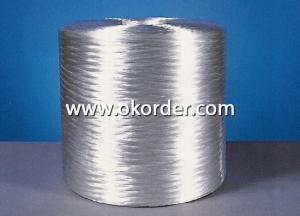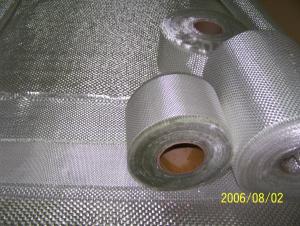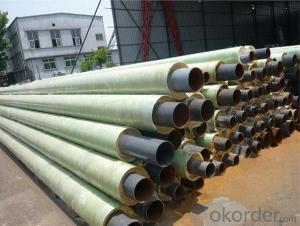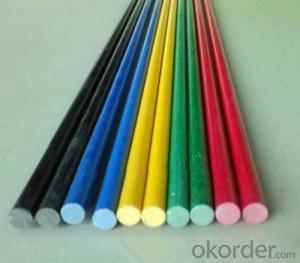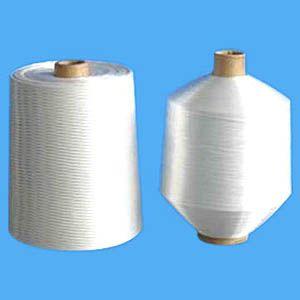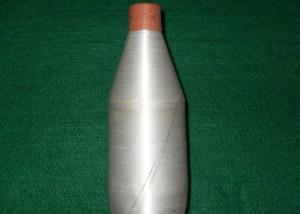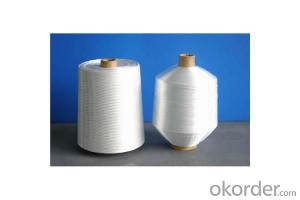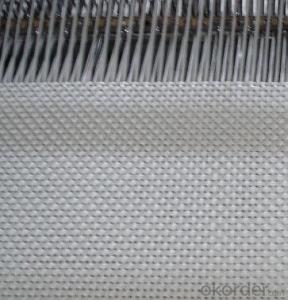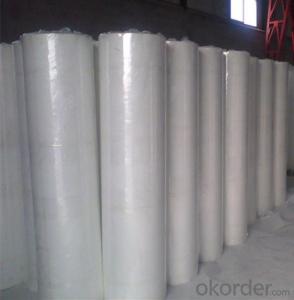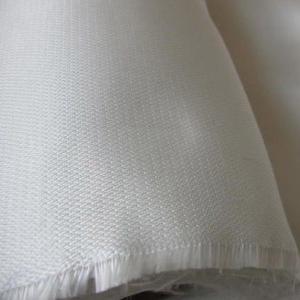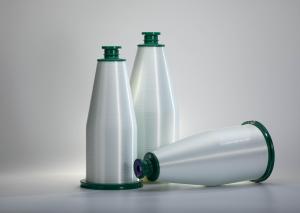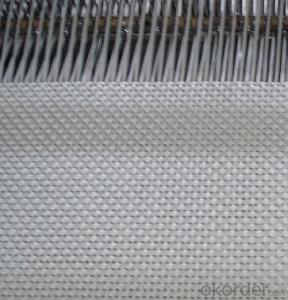Fiberglass Fabric of Different Specification
- Loading Port:
- Shanghai
- Payment Terms:
- TT OR LC
- Min Order Qty:
- 500 m²
- Supply Capability:
- 50000 m²/month
OKorder Service Pledge
OKorder Financial Service
You Might Also Like
Fiberglass Fabric of Different Specification
Fiberglass Fabric Introduction:
Fiberglass fabric is weaved by high quality fiberglass,as a kind of engineering material,which is
many excellent characteristics:
flame-resisting,corrosion resistant,high strength,heat resistance.stable structure,good chemical resistance,durability.
Fiberglass Fabric Features:
Warp and weft yarns are parallel arrangement as flat situation, with uniform tension;
Fiber is aligned with large consistency, stable and easy operation;
Good moldability, fast and complete wet out in resins, resulting in high productivity;
Good transparency and high strength of composite products.
Fiberglass Fabric Specification:
mark | Fiber consistency(ends/ cm) |
Area weight (g/ m2) |
Thick-ness (mm) |
Width (cm) |
Length (mm) | Breaking strength(N)≥ |
weave | |||
Warp direction | Weft direction | Warp direction | Weft direction | |||||||
EW200 | 16 | 12 | 200±20 | 0.2 | 90-130 | 300-1200 | 980 | 980 | ||
EW210 | 16 | 12 | 200±20 | 0.21 | 90-130 | 300-1200 | 1080 | 1080 | Twill weave | |
Plain weave | ||||||||||
EWR360 | 3.2 | 1.8 | 354±18 | 0.35 | 50-300 | 100 | 2000 | 2000 | ||
EW280 | 16 | 10 | 280±28 | 0.26 | 90-130 | 300-1200 | 1800 | 1800 | ||
EW300 | 14 | 10 | 320±32 | 0.3 | 90-130 | 300-1200 | 1500 | 1500 | ||
EW430 | 20 | 12 | 420±42 | 0.43 | 90-130 | 300-1200 | 2000 | 2000 | Broken twill | |
EWR136 | 10 | 10 | 136±13 | 0.136 | 100 | 200 | 850 | 850 |
Plain weave | |
EWR200 | 8 | 7 | 200±20 | 0.21 | 100 | 200 | 1200 | 1200 | ||
EWR400 | 3.6 | 3.2 | 400±30 | 0.4 | 100 | 50-100 | 2500 | 2500 | ||
EWR600 | 2.6 | 2.5 | 600±50 | 0.6 | 100 | 40KG | 4000 | 4000 | ||
EWR580 | 2.5 | 2.3 | 576±29 | 0.58 | 100 | 40KG | 3850 | 3850 | ||
EWR800 | 1.8 | 1.8 | 800±60 | 0.8 | 100 | 40KG | 4600 | 4600 | ||
Product Show
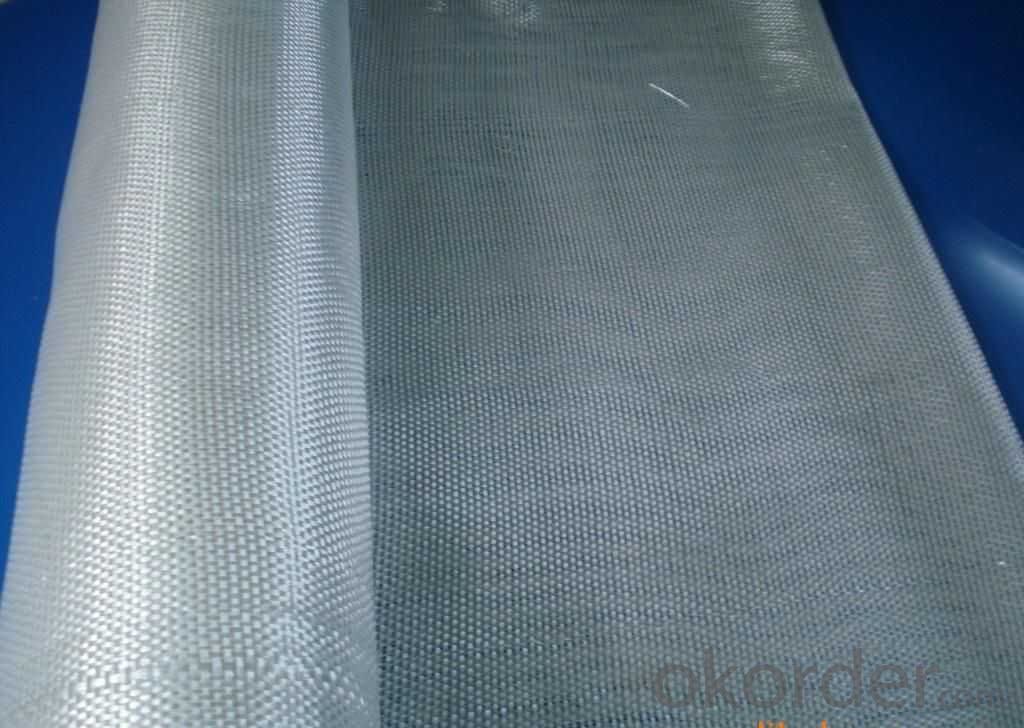
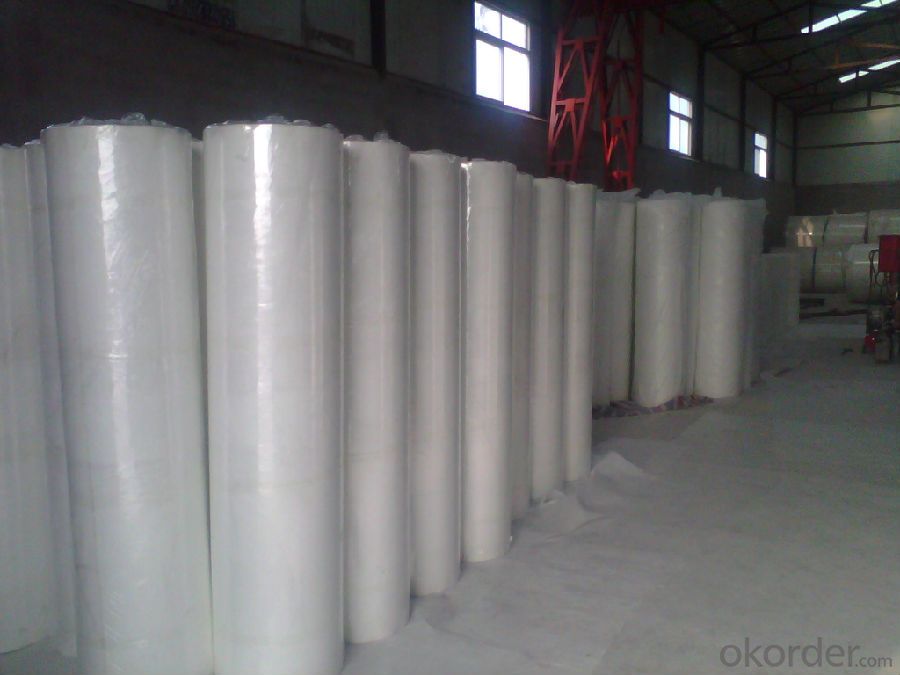
Fiberglass Fabric Usage:
E-glass woven roving is a schistose double faces reinforcement fabric that is weaved into from roving in directly.
E-glass fiber fabric (thin fabrics with thickness from 0.025 to 0.09mm) is suitable for electrical isolation mica product, wax cloth as the reinforcement materials.
E-glass woven roving applys to all kinds of polyester reinforcement system, (such as unsaturated polyester resin, vinylite,epoxy resin and phenolic resin.
E-glass woven roving is a high performance reinforcement material. It is widely used in hand lay-up and machinery processing products, (such as vessel, container, airplane and vehicle component, furniture, athletic facilities and other industry.
FAQ
1.Package of Fiberglass Fabric?
Fiberglass fabric is wound on a paper tube with inner diameters of 50. 8, 76 or 152mm. Each roll is wrapped in a plastic bag, then to be packed in a carton box. The rolls are to be horizontally placed.
Width (cm): 90, 100, 127
Length (m): 100, 200, 300, 400
2.Storage of Fiberglass Fabric?
Store rolls in a cool, dry location
Protect rolls from weather and other damage.
3.If sample available if needed?
We aim to offer our customer best Products&Service,samples are allowed if necessary.
- Q:Can fiberglass yarn be used for pipe insulation?
- Yes, fiberglass yarn can be used for pipe insulation.
- Q:Is fiberglass yarn suitable for use in automotive composites?
- Yes, fiberglass yarn is suitable for use in automotive composites. It is a commonly used material due to its high strength-to-weight ratio, excellent resistance to chemicals and temperature, and its ability to be easily molded into different shapes. Fiberglass composites provide structural support and enhance the overall performance and durability of automotive components.
- Q:Can fiberglass yarn be used for reinforcement purposes?
- Yes, fiberglass yarn can be used for reinforcement purposes. It is commonly used in various industries, such as construction, automotive, and aerospace, to reinforce materials and provide strength and durability. The high tensile strength and resistance to heat and chemicals make fiberglass yarn an ideal choice for reinforcement applications.
- Q:Is fiberglass yarn suitable for use in medical applications?
- Fiberglass yarn is generally unsuitable for medical applications due to its potential to cause irritation or allergic reactions upon contact with the skin. This can be particularly problematic in healthcare settings where patients with sensitive or compromised skin may be exposed to the yarn. Furthermore, the fibers of fiberglass can break off and become airborne, posing a risk of inhalation or ingestion and potentially causing respiratory or digestive issues. Moreover, fiberglass yarn does not possess inherent antimicrobial properties, which is a crucial factor in medical environments where hygiene and infection control are paramount. Therefore, materials specifically designed and tested for healthcare settings are typically preferred. These materials prioritize being hypoallergenic, non-toxic, and antimicrobial to minimize the risk of adverse reactions and infections. In conclusion, while fiberglass yarn has certain advantages, it is generally not suitable for medical applications due to the potential for irritation, lack of antimicrobial properties, and the risk of airborne fibers.
- Q:How does fiberglass yarn react to UV exposure?
- Fiberglass yarn typically reacts well to UV exposure, as it is known to have excellent resistance to ultraviolet (UV) radiation. The composition of fiberglass, which is made of thin strands of glass fibers, provides a natural resistance to the damaging effects of UV rays. This resistance is due to the glass fibers being non-absorptive and non-reactive to UV light. When exposed to UV radiation, fiberglass yarn does not degrade or weaken significantly. It maintains its structural integrity and functionality, making it suitable for outdoor applications where exposure to sunlight is inevitable. This resistance to UV exposure is one of the reasons why fiberglass is commonly used in various industries, such as construction, automotive, and marine. Moreover, fiberglass is often treated with a protective coating or resin during the manufacturing process, further enhancing its resistance to UV rays. This coating acts as a barrier, preventing the UV light from penetrating the fibers and causing damage. It also helps to maintain the aesthetic appearance of fiberglass products, preventing fading or discoloration over time. However, it is important to note that prolonged exposure to intense UV radiation can still have some impact on fiberglass yarn. While it may not directly degrade the fiberglass, it can cause the protective coating to deteriorate over time. This can result in reduced performance or decreased longevity in extreme cases. To mitigate the effects of UV exposure on fiberglass yarn, it is recommended to periodically inspect and maintain the protective coating. Regular cleaning and application of UV-resistant coatings or finishes can help prolong the life of fiberglass products and ensure their continued functionality. Overall, fiberglass yarn is generally considered to be highly resistant to UV exposure and is a reliable choice for outdoor applications where protection against sunlight is required.
- Q:How does the UV resistance of fiberglass yarn compare to other materials?
- Compared to other materials, fiberglass yarn is considered to have excellent UV resistance. It is well-known for its ability to endure prolonged exposure to sunlight and other UV rays without deteriorating or losing strength. This quality makes fiberglass yarn a popular choice for outdoor applications where UV resistance is vital, such as manufacturing outdoor furniture, awnings, and boat covers. On the other hand, materials like cotton or polyester may not provide the same level of UV resistance and can fade, weaken, or become brittle when exposed to long periods of sunlight. Because of this, fiberglass yarn is often favored over other materials for its ability to withstand UV radiation.
- Q:How does fiberglass yarn perform in thermal insulation?
- The exceptional thermal insulation performance of fiberglass yarn is widely recognized. Its unique composition and structure effectively trap air within its fibers, creating a barrier that minimizes the transfer of heat. This property, known as low thermal conductivity, allows fiberglass yarn to efficiently resist the flow of heat, making it highly effective as an insulating material. Furthermore, fiberglass yarn exhibits excellent thermal stability, meaning it can withstand high temperatures without compromising its insulating properties. This quality makes it suitable for a wide range of applications, including insulation for pipes, ducts, walls, and roofs in residential, commercial, and industrial buildings. Moreover, fiberglass yarn is non-combustible, meaning it does not support combustion or contribute to the spread of flames. This feature makes it a safe choice for thermal insulation, as it does not pose a fire hazard. Additionally, fiberglass yarn is renowned for its durability and resistance to moisture, chemicals, and pests. These characteristics make it a reliable and long-lasting insulation material that can maintain its thermal performance over time. In conclusion, fiberglass yarn excels in thermal insulation due to its low thermal conductivity, high thermal stability, non-combustibility, and durability. Its ability to effectively resist heat transfer, combined with its safety and long-lasting properties, make it a preferred option for various insulation applications.
- Q:What are the different treatments available for fiberglass yarn?
- There are several different treatments available for fiberglass yarn, including sizing, coating, and heat treatment. Sizing involves applying a protective coating to the yarn to improve its handling and processing properties. Coating can be done to enhance the yarn's performance characteristics, such as abrasion resistance, flame retardancy, or chemical resistance. Heat treatment is another treatment method used to strengthen the yarn and increase its dimensional stability.
- Q:Is fiberglass yarn suitable for outdoor applications?
- Indeed, outdoor applications are well-suited for fiberglass yarn. Renowned for its robustness and endurance, fiberglass is widely favored for a range of outdoor purposes. Its ability to withstand the effects of weathering, moisture, and UV radiation renders it perfect for outdoor applications, especially those subjected to severe conditions. Moreover, fiberglass yarn boasts a lightweight and pliable nature, facilitating effortless weaving or knitting into diverse fabrics or materials that can endure the elements. Whether employed in outdoor furniture, awnings, tents, or even construction materials, fiberglass yarn offers a dependable and enduring solution for outdoor applications.
- Q:Can fiberglass yarn be used in shipbuilding?
- Yes, fiberglass yarn can be used in shipbuilding. Fiberglass yarn is a strong and lightweight material, making it suitable for various applications in the marine industry. It is commonly used in shipbuilding to reinforce composite materials, such as fiberglass-reinforced plastic (FRP) composites. These composites are used to construct boat hulls, decks, and other structural components, providing them with increased strength and durability. Fiberglass yarn is also resistant to corrosion, which is an important characteristic for materials used in shipbuilding. Overall, fiberglass yarn is a versatile material that can be effectively utilized in the construction of ships and other marine vessels.
1. Manufacturer Overview |
|
|---|---|
| Location | |
| Year Established | |
| Annual Output Value | |
| Main Markets | |
| Company Certifications | |
2. Manufacturer Certificates |
|
|---|---|
| a) Certification Name | |
| Range | |
| Reference | |
| Validity Period | |
3. Manufacturer Capability |
|
|---|---|
| a)Trade Capacity | |
| Nearest Port | |
| Export Percentage | |
| No.of Employees in Trade Department | |
| Language Spoken: | |
| b)Factory Information | |
| Factory Size: | |
| No. of Production Lines | |
| Contract Manufacturing | |
| Product Price Range | |
Send your message to us
Fiberglass Fabric of Different Specification
- Loading Port:
- Shanghai
- Payment Terms:
- TT OR LC
- Min Order Qty:
- 500 m²
- Supply Capability:
- 50000 m²/month
OKorder Service Pledge
OKorder Financial Service
Similar products
New products
Hot products
Hot Searches
Related keywords
